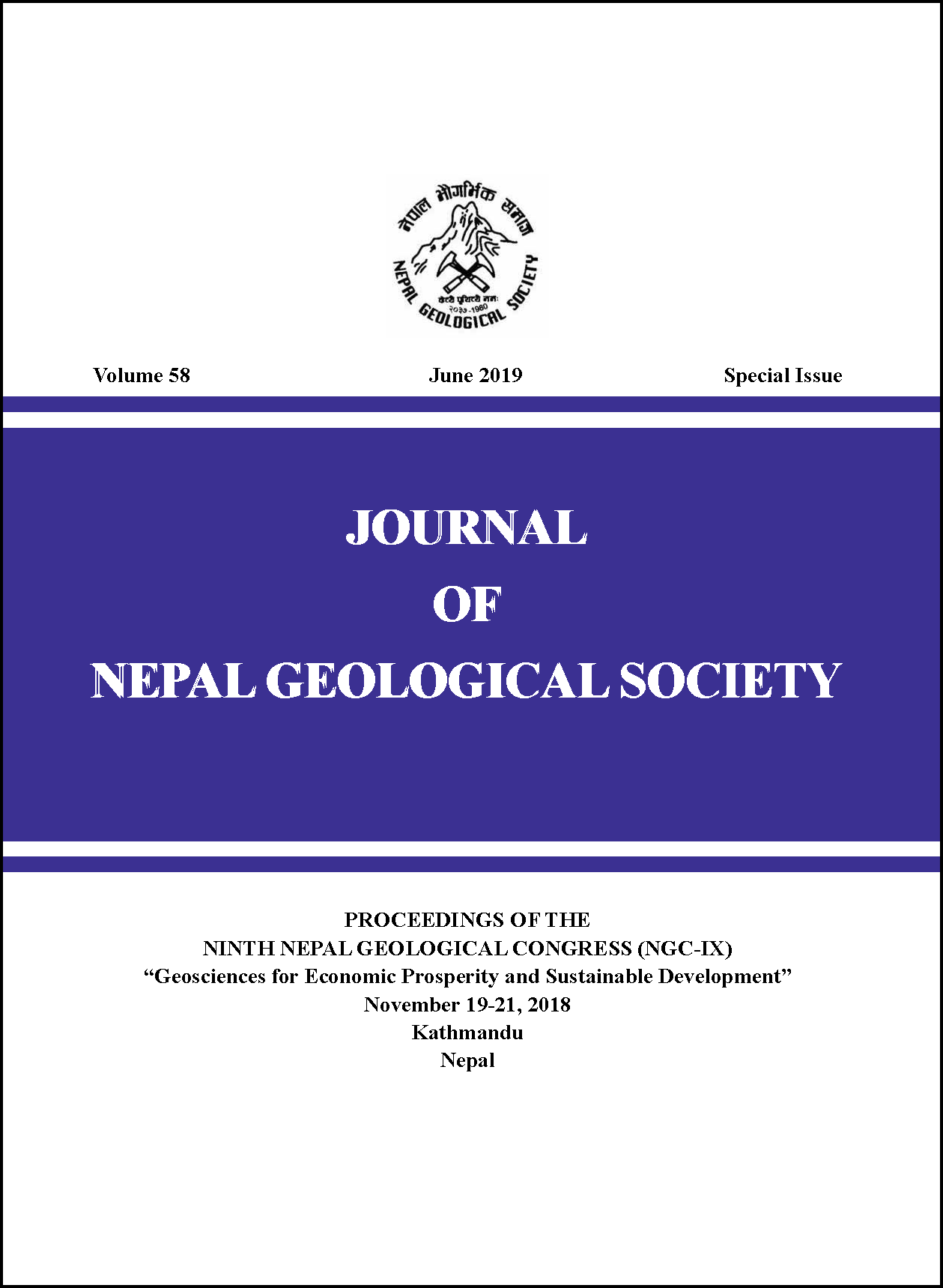Landslide susceptibility mapping using Weight of Evidence Method in Haku, Rasuwa District, Nepal
DOI:
https://doi.org/10.3126/jngs.v58i0.24601Keywords:
Gorkha Earthquake, Earthquake induced landslides, Weight of Evidence, Susceptibility, PGAAbstract
The 2015 Gorkha Earthquake resulted in many other secondary hazards affecting the livelihoods of local people residing in mountainous area. Plenty of earthquake induced landslides and mass movement activities were observed after earthquake. Haku region of Rasuwa was also one of the severely affected areas by co-seismic landslides triggered by the disastrous earthquake. Statistics shows that around 400 families were relocated from Haku Post-earthquake (MoFA, 2015). A total of 101 co-seismic landslides were focused during the study and were verified during the fieldwork in Haku village. The conditioning factors used in this study were slope, aspect, elevation, curvature (plan and profile), landuse, geology and PGA. The conditioning factor maps were prepared in GIS working environment and further analysis was conducted with the assistance of Google earth. This study used Weight of Evidence (WoE), a bivariate statistical model and its performance was assessed. The susceptibility map was further characterized into five different classes namely very low, low, high, medium and very high susceptibility zones. The statistical analysis obtained from the results of the susceptibility map prepared by using WoE model gave the results that maximum area percentage of landslide distribution was observed in medium and high susceptibility classes i.e. 38% and 33% followed by very high (13%), low (10%) and very low classes (5.8%) About 25% of the total landslides are separated to validate the prepared model used in the landslide susceptibility zonation. The overlay method predicts the reliability of the model.
Downloads
Downloads
Published
How to Cite
Issue
Section
License
© Nepal Geological Society




